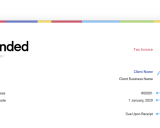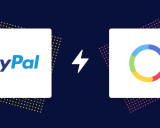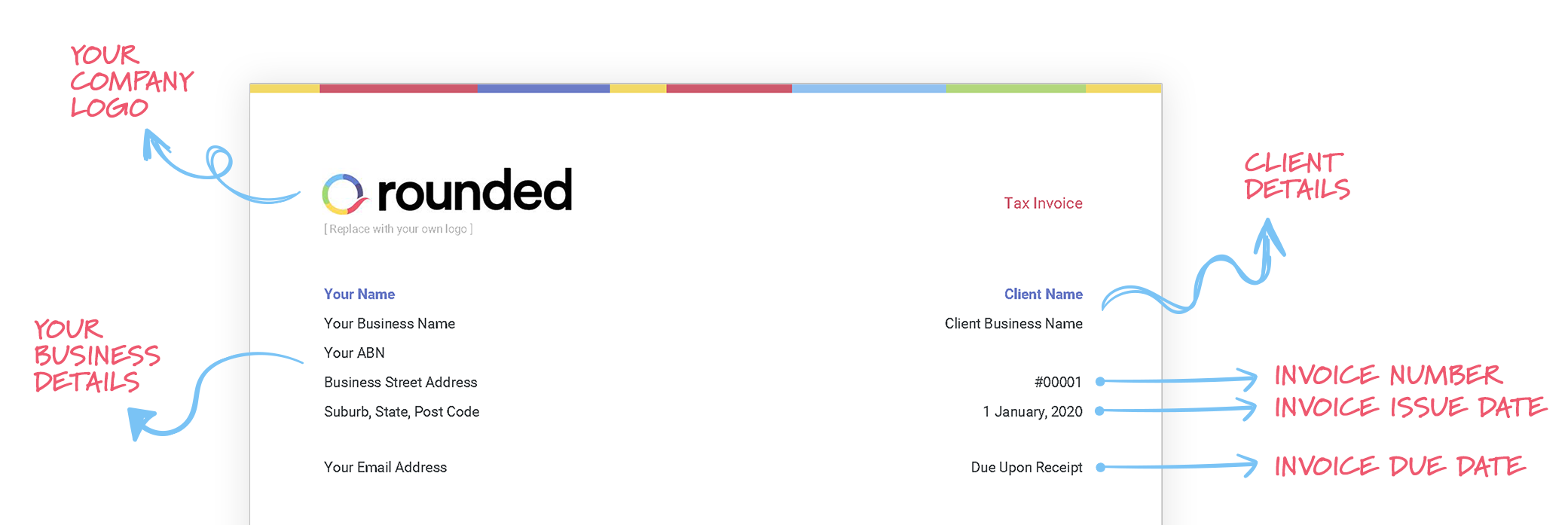
Freelancer Red Flags: 7 signs you’re dealing with a difficult client
When you own your own business, you have the power to say no to clients who exhibit bad behaviour. We asked 5 freelance professionals what warning signs (or red flags) they’ve encountered in the course of their careers.
Article contents
− +- Introduction
- 🚩They refuse to give you a proper brief
- 🚩They are already panicking about deadlines
- 🚩They haggle your prices from day one
- 🚩They have had a million bad experiences with freelancers
- 🚩They promise big rewards later (but won’t pay now)
- 🚩They routinely disrespect your boundaries
- 🚩They want to control everything and won’t accept feedback

It can be hard to say no to a project when you’re working for yourself. Turning down a client feels like flushing money down the toilet—but sometimes it’s absolutely the right decision.
Over the course of your freelance career, you’ll start to recognise the signs a client is going to bring major headaches—and the sooner you can recognise these red flags 🚩, the sooner you can deal with the problem or move on.
We reached out to a group of seasoned freelancers to find out what red flags they’ve encountered which made them say, “This project is more trouble than it’s worth.”
The next time you’re onboarding a client or qualifying a lead, keep these warning signs in mind.
🚩They refuse to give you a proper brief
Whenever you start a relationship with a new client, the first step is usually gathering essential details about the business and the project. Without this information, it will be impossible for you to do your job well.
Unfortunately, it’s not always easy to get clients to share this info. Perhaps you receive no brief at all, or the brief is hastily filled out and scant on details.
“If there’s no brief, then there are no goals, and the client doesn’t really know what they want out of my work,” says Sarah Colley, a freelance content writer at The Write Destination.
“Sometimes I can work the information out of them, but this is a red flag because it means they don’t know much about what you’re offering, what they want, or what value you can bring.”
If you proceed without a proper brief, it will be almost impossible to meet the client’s expectations—especially since they can change their expectations as the project continues.
The end result: You end up working twice as much to fulfil the brief that’s in their head, and the client is less than impressed with what you do deliver.
How to deal with it
If you routinely need full briefs for your work, create a template that will guarantee you get the necessary info. Try going through this brief together in a meeting or on the phone if your client is pressed for time. But if they won’t give you the info you need at all, it may be best to cut ties, rather than waste time trying to make something out of nothing.
🚩They are already panicking about deadlines
Have you ever encountered someone who consistently seems to be running low on time? Their deadlines are urgent, and if something is even a little late, it sends them into full panic mode.
If you have a client like this, their stress will spillover into your work; they may ask you for deadlines that are impossible, or they make timelines seem much more aggressive than they really are.
Of course, many businesses rely on firm deadlines for their services, and being able to deliver your work on time will increase your value. But if you’re constantly dealing with frantic, stressed clients who can’t manage their time, you may be getting into a toxic situation.
Unfortunately, if a client is struggling with timelines early on, it’s unlikely that this issue will clear up on its own. So if you decide to move forward with the project, any future work that comes from this client will likely be just as high-stress.
How to deal with it
Always be up front and firm with your deadlines. Give yourself extra time when you can, or make your deadlines flexible.
For example, you can tell clients you’ll give them your work “early next week” rather than committing to Monday at 9am.
When clients ask you to rush a project, consider charging a rush fee. If it’s really urgent, they’ll be willing to pay so you can prioritise their work over the other work you’re doing. Or you may just discover that when you put a price on the line, the unmovable deadline can actually move.
🚩They haggle your prices from day one
“Potential clients who haggle about pricing turn out to be the biggest headaches to work with,” says B2B SaaS Content marketing strategist Lauren Lang.
Some freelancers may have negotiable prices—for example, a freelance web designer may offer different priced packages depending on how advanced the end product needs to be.
However, offering a range of prices and services does not mean your clients get to argue for the best price like they’re at an auction. This almost always ends up with the freelancer taking a pay cut, while the client walks away thinking they’ve got a great deal (and can do the same to the next freelancer they encounter).
How do you deal with it?
If you find this issue is occurring quite frequently, there may be a problem with the way you’re pricing and packaging your services.
“It might sound counterintuitive at first, but raising your fees often brings in better clients who respect your expertise and consider you a valued partner instead of just an order taker,” Lauren suggests.
Related: How to set the right prices for your freelance business
If you’re happy with your prices where they are, try making a rate card, or list your prices on your freelancer website, so that clients know your rates are set in stone.
🚩They have had a million bad experiences with freelancers
Listen carefully to how your clients discuss previous work with freelancers. If they routinely talk about all of the bad experiences they’ve had with contractors in the past, chances are the client is the common denominator.
Social media strategist Ragavi Ramu Tamizh shared a story about an awkward discovery call she had, during which the client was routinely bad-mouthing another freelancer. When she checked out the work that freelancer had done, she discovered her work was excellent.
“That sent me running for the hills,” Tamizh said. “Badmouthing other freelancers is a bad look. Who’s to say they wouldn’t do the same to me someday, even if I turned in good work?”
Your reputation depends on your clients’ satisfaction and positive feedback. If you sign up to work with someone who seems to always be dissatisfied, you are putting your brand integrity on the line.
How to deal with it
When considering whether to take on a new lead, ask a few questions about their previous work with freelancers. They don’t need to be 100% positive about every experience, but their tone should give you some clues about how they will treat you if you accept the job.
You can also use the website Glass Door to see what former employees have to say about the company you’re considering working with. If they’ve got dozens of negative comments, and few or no good ones, that’s a big red flag.
🚩They promise big rewards later (but won’t pay now)
“This product is going to take off soon…”
“You can get in on the ground floor now…”
“This will be really good for your career…”
Promises like these might sound good, but they’re often used as a negotiating tactic to get you to lower your prices. If a company wants to pay you less now, because some day in the future you’ll reap a greater reward, here’s a spoiler alert: That day is never going to come.
Compromising on your prices also sets an unhealthy standard for the client. If you’re willing to reduce your rates based on a (potentially empty) promise, they’ll be far more likely to haggle pricing on any future work you do together.
How to deal with it
Keep an eye out for this kind of phrasing, because it’s almost certainly a red flag that should make you seriously consider the working relationship.
Remember what we said above—you can offer flexible prices, but there is no reason a client should make you drastically lower your rates based on some hypothetical windfall later on.
🚩They routinely disrespect your boundaries
Freelancers have to work hard to maintain a healthy work-life balance, and that means setting clear and firm boundaries with clients.
Perhaps you commit to staying out of your inbox on weekends or after a certain time of night, or you limit yourself to a certain number of phone calls with clients based on their contract.
When you set these boundaries, you’ll find some clients can’t resist testing them. They’re demanding you answer emails on Saturday night, and they are always asking for extra work (with no extra payment, of course.)
It’s very likely that a client who tests your boundaries once will do it again and again. Continuing to work with people like this means you’ll be sacrificing the rules you’ve put in place to maintain your happiness and prosperity.
How to deal with it
The first step is knowing exactly what your boundaries are. If you’re the kind of person who always says yes, your clients will pick up on that—since you don’t set boundaries, you’re easy to take advantage of.
Communicating boundaries at the start of the relationship is best. When working out contracts and the scope of a project, tell your clients what your working hours are, and spell out exactly what deliverables they can expect from you, and when.
Anyone who consistently challenges these boundaries is likely not worth keeping in your client base.
🚩They want to control everything and won’t accept feedback
Your clients hire you because you are an expert, and they want your advice on what to do. Unfortunately, when it comes to actually taking advice, some clients just aren’t able to do it.
“A big red flag for me is when a client wants to run the whole show, but they don’t have any ideas on how to do it and push back on the advice I’m giving them,” says Joy Nibbs, a content designer and poet at WritnWell.com.
Of course, clients don’t have to follow every piece of advice or guidance they give you—but if they’re paying for your insights, they should have a clear and understandable reason why they are pushing back.
If clients ever take your feedback and professional advice personally, they are showing you that progress won’t be possible. No matter how hard you work, or how excellent the work you do is, the client won’t be satisfied—so it may be time to move on.
How to deal with it
When a client is resistant to your advice or guidance, explore the reasons why with them. It may be best to do this on a call or in person, so they can see you are curious, not judgemental.
If clients become emotional when taking on feedback, or if they say no to every single idea you bring to the table without contributing any of their own, you are most likely in a toxic working relationship which can’t be mended.
Over the course of your freelance career, you’ll encounter wonderful clients who respect and value your work. You’ll also come across potential clients who match some of the descriptions in this article. When you do, remember these freelancers’ wise words.
Cover photo by Girl with red hat on Unsplash
Contents
- Introduction
- 🚩They refuse to give you a proper brief
- 🚩They are already panicking about deadlines
- 🚩They haggle your prices from day one
- 🚩They have had a million bad experiences with freelancers
- 🚩They promise big rewards later (but won’t pay now)
- 🚩They routinely disrespect your boundaries
- 🚩They want to control everything and won’t accept feedback
Join newsletter
ABOUT ROUNDED
Invoicing and accounting software for sole traders. Get paid faster and relax at tax time.



























